
Palpita vitrealis, common name jasmine moth or white pearl, is a species of moth of the family Crambidae.

Caryocolum blandella is a moth of the family Gelechiidae. It is found from central and northern Europe to the Ural Mountains and southern Siberia.
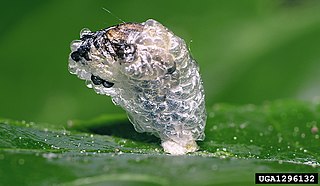
Coleophora kuehnella is a moth of the family Coleophoridae. It was first described by Johann Goeze in 1783 and is found in Asia and Europe.

Schinia cognata is a moth of the family Noctuidae. It is found in south-eastern Europe and Turkey.

Nola aerugula, the scarce black arches, is a moth of the family Nolidae. The species was first described by Jacob Hübner in 1793.
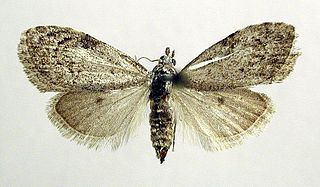
Nola confusalis, the least black arches, is a moth of the family Nolidae. It is found in most of Europe, east to eastern Asia and Japan.
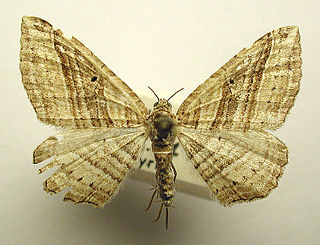
Costaconvexa polygrammata, the many-lined moth, is a moth of the family Geometridae. The species was first described by Moritz Balthasar Borkhausen in 1794. It is found from Europe to North Africa.

Parectropis similaria, the brindled white-spot, is a moth of the family Geometridae. The species was first described by Johann Siegfried Hufnagel in 1767. It is found in most of Europe.

Eulamprotes wilkella is a moth of the family Gelechiidae. It is found in most of Europe. Outside of Europe, it is found in Turkey, the Caucasus and Siberia.

Neofriseria peliella is a moth of the family Gelechiidae. It is found in most of Europe east to the Ural Mountains. Outside of Europe, it is found in Turkey and North Africa.

Orophia ferrugella is a species of moth in the family Depressariidae. It was described by Michael Denis and Ignaz Schiffermüller in 1775. It is found in most of Europe, except Ireland, Great Britain, the Netherlands, Portugal, Ukraine, Slovenia, and Greece.
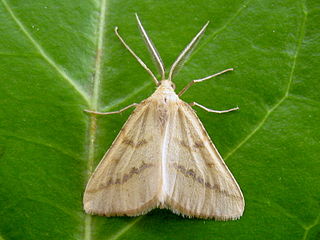
Aspitates ochrearia, the yellow belle, is a moth in the family Geometridae. The species was first described by Pietro Rossi in 1794. It is found in western and southern Europe, as well as North America.
Athrips rancidella, the cotoneaster webworm, is a moth of the family Gelechiidae. It is found in most of Europe, except Ireland, the Netherlands, Fennoscandia and the Baltic region. It has also been recorded from Syria, Turkmenistan, Tajikistan and the United States.

Chionodes lugubrella is a moth of the family Gelechiidae. The geographical distribution of this species extends throughout Europe, into the Caucasus, Siberia and the Russian Far East. It is also found in North America.

Xystophora pulveratella is a moth of the family Gelechiidae. It is found from central and northern Europe to the Ural Mountains and southern Siberia.
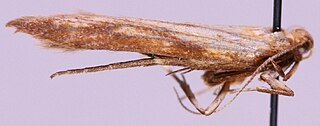
Metzneria neuropterella, the brown-veined neb, is a moth of the family Gelechiidae. It is found from most of Europe to the southern Ural Mountains, the Caucasus, southern and south-eastern Siberia and Mongolia, as well as in North Africa. The habitat consist of short-turfed, herb rich chalk downland.

Metzneria lappella, the burdock seedhead moth or burdock seed moth, is a moth of the family Gelechiidae.

Psoricoptera gibbosella, the humped crest, is a moth of the family Gelechiidae. It is widely distributed in Europe. Outside of Europe, it is found in Turkey, North Africa, China, Japan, Korea, Siberia and the Russian Far East. The habitat consists of mature woodlands.
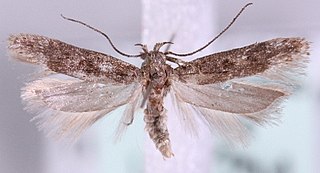
Scrobipalpa salinella, the sea-aster groundling, is a moth of the family Gelechiidae. It is found Europe, along the coast and in inland halophytic habitats. In the east, the range extends through Siberia and Central Asia to Mongolia. It is also found in North Africa.

Notocelia tetragonana, the square-spot bell, is a species of moth of the family Tortricidae. It is found in China, Russia and Europe, where it has been recorded from most of the continent, except the Iberian Peninsula, the Netherlands, Denmark and most of the Balkan Peninsula. The habitat consists of woodland and scrubland.

















